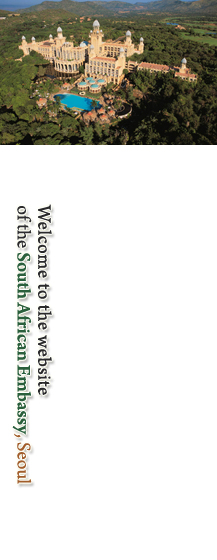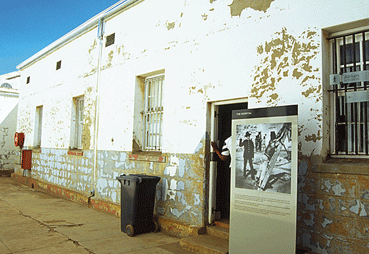
 |
 |
 |
 |
 |
 |
 |
 |
 |

Apartheid In 1910, the Union of South Africa was created out of the Cape, Natal, Transvaal and Free State. It was to be essentially a white union. Black opposition was inevitable, the African National Congress (ANC) being founded in 1912 to protest the exclusion of blacks from power. In 1921, the Communist Party came into being at a time of heightened militancy. In the face of a groundswell of opposition to racially defined government, the seminal Natives Land Act was legislated in 1913. This defined the remnants of blacks’ ancestral lands for African occupation. The homelands, as they were subsequently called, eventually comprised about 13% of South Africa’s land. More discriminatory legislation ? particularly relating to job reservation favouring whites, and the disenfranchisement of coloured voters in the Cape ? was enacted. Meanwhile, Afrikaner nationalism, fuelled by job losses arising from worldwide recession, was on the march. After the Second World War, in 1948, the pro-Afrikaner National Party (NP) came to power with the ideology of Apartheid, an even more rigorous and authoritarian approach than the previous segregationist policies. While white South Africa was cementing its power, black opposition politics was evolving. In 1943, a younger, more determined political grouping came to the fore with the launch of the ANC Youth League, a development which was to foster the leadership of figures such as Nelson Mandela, Oliver Tambo and Walter Sisulu. In 1961, the NP Government under Prime Minister H.F. Verwoerd declared South Africa a republic after winning a whites-only referendum. A new concern with racial purity was apparent in laws prohibiting interracial sex and in provisions for population registration requiring that every South African be assigned to one discrete racial category or another. Residential segregation was enforced, with whole communities being uprooted and forced into coloured ‘group areas’. At a time when much of Africa was on the verge of independence, the South African Government was devising its policy of separate development, dividing the African population into artificial ethnic ‘nations’, each with its own ‘homeland’ and the prospect of ‘independence’. The truth was that the rural reserves were by this time thoroughly degraded by overpopulation and soil erosion. Forced removals from ‘white’ areas affected some 3,5 million people, and vast rural slums were created in the homelands. The pass laws and influx control were extended and harshly enforced. The introduction of Apartheid policies coincided with the adoption by the ANC in 1949 of its Programme of Action, expressing the renewed militancy of the 1940s. The Programme embodied a rejection of white domination and a call for action in the form of protests, strikes and demonstrations. The Defiance Campaign of the early 1950s carried mass mobilisation to new heights under the banner of non-violent resistance to the pass laws. In 1955, a Freedom Charter was drawn up at the Congress of the People in Soweto. The Charter enunciated the principles of the struggle, binding the movement to a culture of human rights and non-racialism. Soon the mass-based organisations including the ANC and the Pan-Africanist Congress (PAC) were banned. Matters came to a head at Sharpeville in March 1960 when 69 PAC anti-pass demonstrators were killed. A state of emergency was imposed, and detention without trial was introduced. Leaders of the black political organisations at this time either went into exile or were arrested. In this climate, the ANC and PAC abandoned their long-standing commitment to non-violent resistance and turned to armed struggle, waged from the independent countries to the north. Top leaders still inside the country, including members of the ANC’s newly formed military wing Umkhonto we Sizwe (Spear of the Nation), were arrested in 1963. At the ‘Rivonia Trial’, eight ANC leaders, including Mandela, convicted of sabotage (instead of treason, the original charge), were sentenced to life imprisonment. While draconian measures kept the lid on activism for much of the 1960s, the resurgence of resistance politics in the early 1970s was dramatic. The year 1976 marked the beginning of a sustained anti-Apartheid revolt. In June, school pupils in Soweto rose up against Apartheid education, followed by youth uprisings all around the country. Strong, legal vehicles for the democratic forces tested the State, whose response until then had been invariably heavy-handed repression. Shaken by the scale of protest and opposition, the Government embarked on a series of reforms in the early 1980s, an early example being the recognition of black trade unions. In 1983, the Constitution was reformed to allow the Coloured and Indian minorities limited participation in separate and subordinate Houses of Parliament, which enjoyed limited support. In 1986, the hated pass laws were scrapped. At this time, the international community strengthened its support for the anti-Apartheid cause. In February 1990, newly elected President F.W. de Klerk announced the unbanning of the liberation movements and the release of political prisoners, notably Mandela. (*Source : Pocket Guide to South Africa 2004 ) |
|||||||||

